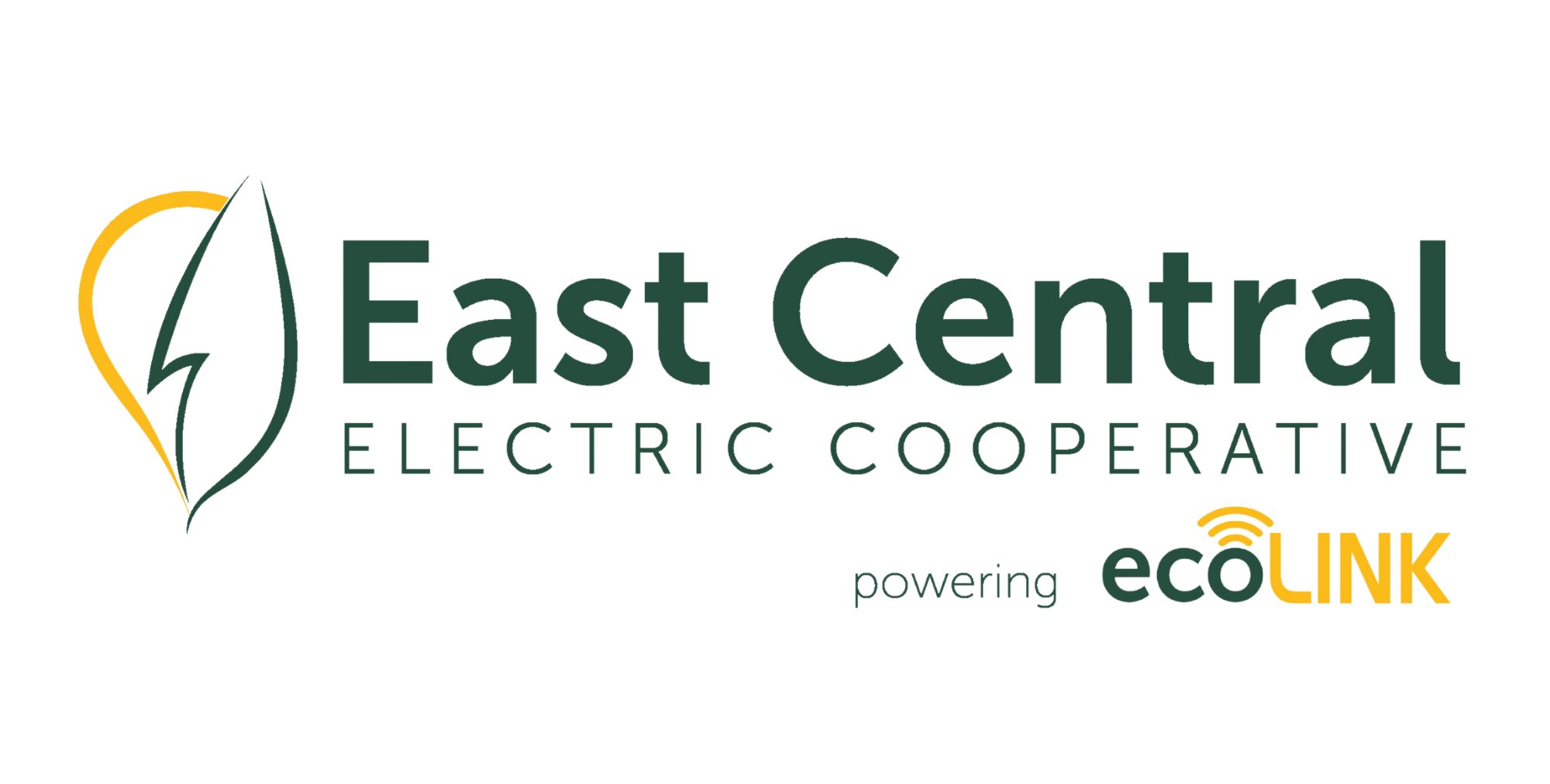Facts about Tree Growth Regulators
East Central Electric routinely applies Tree Growth Regulators (TGRs) to trees across it’s service area. Trees that are treated are those that are located along the powerline right-of-way that have been trimmed in yards and inaccessible areas. Below are some facts regarding what tree growth regulators are and what to expect when your area is treated.

Tree Growth Regulators are hormonal compounds that regulate stem growth. Horticulturalists have used them for decades to control growth and development, particularly in fruit and floral production. TGR applications help trees manage their resources during the pruning cycle. The result is greener leaves with higher chlorophyll content, drought tolerance, disease resistance, and reduced shoot regrowth.
TGR applications are made to trees located in the right-of-way easements that have a history of growing into the powerlines and creating an unsafe situation, blinking lights, and outages. TGRs can be applied to trees located in areas that are not easily accessed or checked regularly.
Research works going back to the 1950s showed that tree growth regulators applied to cut branches could reduce resprouting. Development of the tree growth regulators and application methods eventually found that creating a dam around the trunk and drenching the trunk with a measured amount of product, the process known as soil drenching, was the least intrusive. Further development in today’s arboriculture utilizes a soil probe that injects the TGR product called paclobutrazol after the tree has been recently trimmed.
TGRs work within the normal plant functions using plant hormones. This is the least stressful and intrusive manner to manage each tree. Over 2,000 peer-reviewed studies have been published in the past 50 years documenting the multiple uses of growth regulators in agriculture, horticulture, and vegetation management. In a recent study from 2009 in Oklahoma, researchers monitored trees following the application of paclobutrazol by utility crews and found that shoot growth was controlled for up to five years (Matthews, 2009). Reducing growth for a few years equates to a healthier tree that is trimmed less over the tree’s lifespan.
Cambistat is a soil applied product that is absorbed through the roots. Cambistat gently slows the growth of trees, allowing the tree to redirect some of its energy from canopy growth to defense chemicals, fibrous root production, and other uses. The resulting reallocation of energy makes your tree healthier and more durable.
Cambistat® to Reduce Growth and Increase Health
Slowing Growth for a Healthier Tree
Large trees add beauty, character, and value to the landscape, and they are highly desired by many homeowners. While it is appealing to think most trees in the landscape will eventually grow large and provide these benefits, this may not always be in the best interest of your tree and property.
There are two main reasons why:
- The size of a mature tree is often underestimated, and many trees are planted too close to houses, garages, powerlines, and other structures. This type of interference may cause damage to the property and require additional maintenance to correct.
- Large trees require more water, minerals, and soil volume for roots than smaller trees, and these resources may not be available in sufficient quality in smaller urban sites. If these resources are limited tree health will eventually suffer.
What does Cambistat do?
Cambistat is a tree growth regulator that reduces canopy growth by 40-70% over a three year period. Reducing the amount of tree growth can help you:
- Safely maintain the visual appeal of the landscape.
- Reduce the amount of live wood pruning required.
- Prevent premature overcrowding of competing trees.
- Maintain a smaller, more appropriate tree size when there is a restricted root zone.
- Maintain vista views with less frequent pruning.
- Extend the time in between pruning events.
- Minimize intrusion by power companies.
Additional Cambistat Benefits
As a result of growth reduction, some favorable changes occur that enhance the durability of your tree to the stresses associated with living in a urban yard. These include:
- Stimulate fine root production
- Improve drought and heat resistance
- Higher tolerance to certain diseases
Slower Growing Trees
A common myth about trees is that faster growing tree is healthier than a slower growing tree. The truth is that slower growing trees will outlive trees that grow faster, especially in situations such as yards where space and resources are limited. The chart below shows some important differences between a tree growing relatively faster or slower.
Cambistat Treated Tree
An Integrated Approach
When caring for urban trees, it is important to make a thorough evaluation of the site to accurately diagnose all stressing agents and tailor your recommendation to the specific circumstances. These must be dealt with so that your tree can live to its fullest potential. Utilize your arborist for a comprehensive maintenance program.
Benefits of Cambistat for Urban Trees
Cambistat is a soil applied product that is absorbed through the roots. Cambistat gently slows the growth of trees, allowing the tree to redirect some of its energy from canopy growth to defense chemicals, fibrous root production, and other uses. The resulting reallocation of energy makes your tree healthier and more durable.
Drought is a major cause of tree death and decline in the urban landscape. Research shows Cambistat increases drought resistance by helping the tree reduce water losses during dry, hot periods.
Cambistat changes some important physical traits of leaves. Leaves of treated trees tend to be greener (higher concentrations of chlorophyll) than untreated and have an enhanced protective barrier (thicker leaf surface and denser surface hairs).

